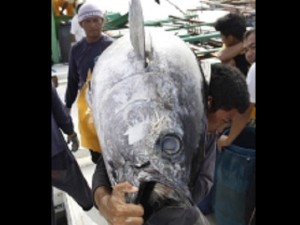Int’l body allows Philippines access to protected Pacific fishing grounds
GENERAL SANTOS CITY, Philippines—The Western and Central Pacific Fisheries Commission (WCPFC) has given Philippine fishing vessels limited access to protected fishing grounds in the Pacific Ocean, Mindanao Development Authority chair Luwalhati Antonino said.
While the access is limited, Antonino said, it nevertheless would spell a lot of difference in the country’s fish supply.
The international fisheries commission banned commercial fishing and adopted conservation and management measures in the western and central Pacific Ocean in 2008 to mitigate over-fishing of big-eye and yellow fin tuna species.
The ban affected several fishing firms here, which are engaged in catching small or juvenile tuna.
Members of the Socsksargen (South Cotabato, Sultan Kudarat, Sarangani and General Santos) Fishing Federation and Allied Industries had asked the help of the national government in lobbying the WCPFC to give preferential treatment to Filipino fishers operating in the area.
The WCPFC is a treaty-based organization established to conserve and manage tuna and other highly migratory fish stocks across the western and central areas of the Pacific Ocean. It commenced operations in late 2005.
Last month, Antonino made representations with the commission when the regulatory body met in Guam.
Antonino said the commission partially granted the request of the Philippine government and gave permits to 36 fishing vessels to venture into Pockets 1 and 2 of the Pacific Ocean until February 2013.
Pocket 1 is the expanse of water between Papua New Guinea, the Philippines and Indonesia while Pocket 2 refers to the area between Papua New Guinea, Fiji, New Caledonia and part of the Solomon Islands.
“The lifting of the fishing ban can greatly benefit the country’s fishing industry especially in Mindanao,” Antonino said in a statement. But she warned Filipino fishers against abusing the limited access the commission has granted.
The Bureau of Fisheries and Aquatic Resources said it was happy about the partial lifting of the ban.
Asis Perez, BFAR director, said he was hoping access would be extended beyond 2013, especially if the commission sees Filipino fishers strictly abiding by its conditions.
Tuna remains one of the top exports of Mindanao with a combined (fresh and frozen) freight-on-board (FOB) value amounting to $311 million in 2010.
The industry provides employment to around 100,000 people in fishing, canning, processing and other auxiliary services.
The United States, European Union and Japan remain the main markets for the country’s tuna products.
